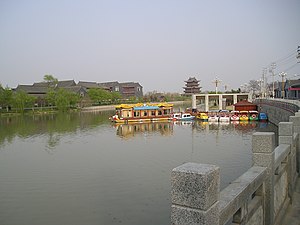The history of canals in China connecting its major rivers and centers of agriculture and population extends from the legendary exploits of Yu the Great in his attempts control the flooding of the Yellow River to the present infrastructure projects of the People's Republic of China. From the Spring and Autumn period (8th–5th centuries BCE) onward, the canals of China were used for army transportation and supply, as well as colonization of new territories. From the Qin (3rd century BCE) to the Qing (17th–20th centuries CE), China's canal network was also essential to imperial taxation-in-kind.[1] Control of shipbuilding and internal tariffs were also administered along the canals.[2]

